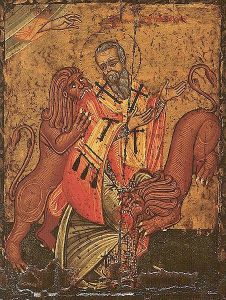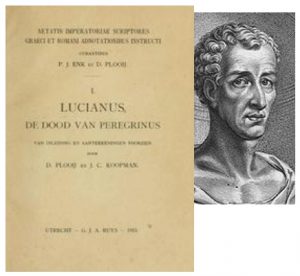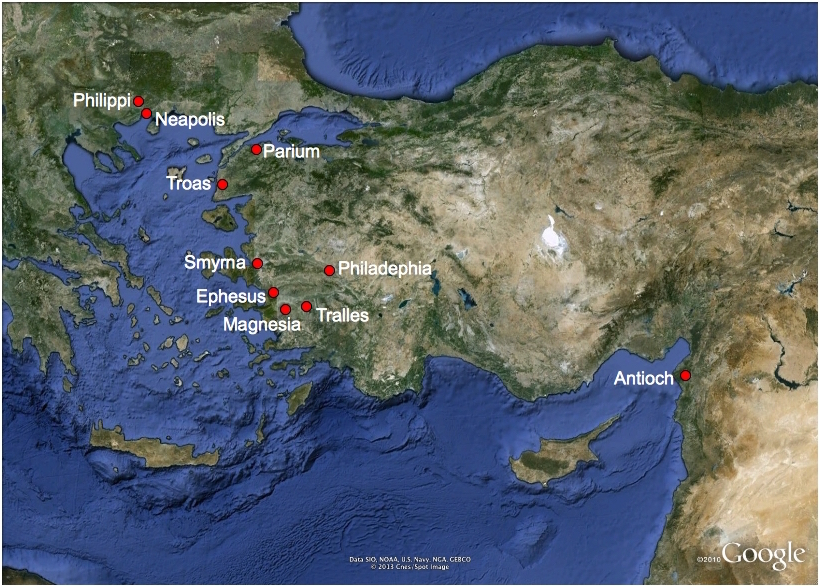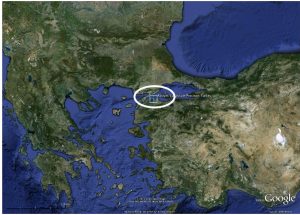(updated 2 hours after first posting)
This post is a distillation of the chapter “Why Ignatius Invented Judaism” by Daniel Boyarin in The Ways That Often Parted: Essays in Honor of Joel Marcus. It covers the same questions addressed by Roger Parvus (see sidebox) but with a different hypothesis.
The essence of Boyarin’s view is that Ignatius
a. used the term that we translate as “Judaism” to refer to any attempt to link gospel details to the Old Testament; and that
b. the gospel of Jesus Christ stood as true without any reference to Old Testament prophecies or scriptures.
This idea throws an interesting perspective on thesis we have at times addressed on this blog that the canonical gospel characters, events and sayings were constructed out “midrashic” or intertextual interpretations of Old Testament books and that their symbolic meanings were subsequently lost by those Christians who became the foundation of the Church we know today. Can the epistles of Ignatius be viewed as an early stage of that misunderstanding and loss of the original meaning of our gospels? (These, of course, are my questions, not those directly raised by Boyarin.)
Boyarin begins by comparing Paul’s and Ignatius’s respective uses of the term “Judaism” (Ioudaismos). For Paul it meant performing certain practices, not an institution. Thus when Paul writes
and I was advancing in Judaism beyond many of my contemporaries among my countrymen, being more extremely zealous for my ancestral traditions (Gal. 1:14 NASB)

he means the “practice of Jewish ways of loyalty to the traditional doings of Jews” that Josephus described as
the ancestral [traditions] of the Ioudaioi (τὰ πάτρια τῶν Ἰουδαίων – A.J. 20.41)
It does not mean an abstract category of “a religion”. It means performing practices, customs, rituals, etc. It is the counterpart of what Thucydides complained that Plataeans were doing when they were “Medizing” — that is, “forsaking their ancestral traditions” (παραβαίνοντες τὰ πάτρια, Thucydides, P.W. 3.61.2), copying the customs of the Medes. (I am only presenting the main idea: Boyarin’s justification for this interpretation is a lengthy discussion of Galatians passages than I have outlined above.)
For Paul, it was the Jewish law that stood against the gospel. For Ignatius, however, gospel stood in opposition to Jewish scriptures.
Old Fables/Myths
At one point Ignatius equates “heterodoxy and old myths” with this Judaizing of his heretics:
Be not deceived by heterodoxiai nor by old fables, which are useless. For if we continue to live until now according to Ioudaismos, we confess that we have not received grace” (Magn. 8.1).
Could such fables possibly be connected with Jewish Scriptures here? Ignatius links them with “Judaizing”. Ignatius continues from the above passage to speak positively of the prophets, but he used the fact that they were persecuted (Magn 8:2) as evidence that they were on his side (Barrett, 237). In the Pastoral epistles we likewise read of the association of Judaism with mythology — Titus 1:14; I Timothy 1:4; 4:7; II Timothy 4:4). Ignatius appears to criticize the “Judaizers” for “mythologizing” the Scriptures: i.e. either reading them literally (Barrett, 237) or midrashically (my suggestion).
Gospel versus Scriptures
The first Christian to make that declaration, as far as we know, was Marcion. (Boyarin doubts that Ignatius took the idea from Marcion but Parvus argues that that was exactly where the idea ultimately derived.) The key passage is in Ignatius’s letter to the Philadelphians: Continue reading “How Ignatius Cut Christianity Off From its Jewish Roots”





